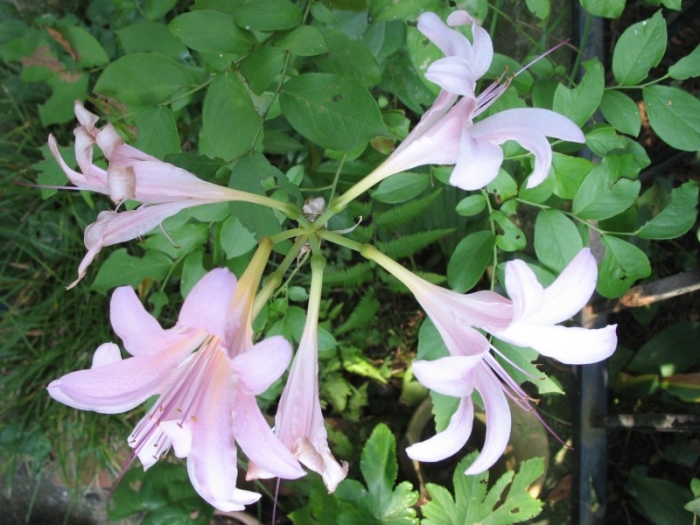Resurrection Lily
(Lycoris squamigera)
Resurrection Lily (Lycoris squamigera)
/
/

Sphl
CC BY-SA 3.0
Image By:
Sphl
Recorded By:
Copyright:
CC BY-SA 3.0
Copyright Notice:
Photo by: Sphl | License Type: CC BY-SA 3.0 | License URL: http://creativecommons.org/licenses/by-sa/3.0/ | Uploader: Sphl~commonswiki | Publisher: Wikimedia Commons | Title: Lycoris_squamigera2.jpg | Notes: |










































Estimated Native Range
Summary
Lycoris squamigera, commonly known as Resurrection Lily, is a deciduous perennial herb that is native to grasslands, open woodlands, and along stream banks in Southeastern China, Japan and Korea. It typically grows up to 24 inches (60 cm) tall and 18 inches (45 cm) wide. The plant is characterized by its strap-shaped, green leaves that grow in the spring and die back by midsummer, leaving the ground bare until the flowers emerge. The flowers, which are showy and fragrant, appear on naked stems in late July or early August, displaying a striking white or pink color. The rapid emergence of the flowers, taking only four to five days from first sighting to full bloom, has led to its common names: surprise lily, magic lily, and resurrection lily.
Resurrection Lily is valued for its dramatic flowering and ease of maintenance. It is often used in borders, rock gardens, and as a naturalizing plant. It is also suitable for urban gardens due to its adaptability. The plant prefers full sun to part shade and requires medium amounts of water. It thrives in well-drained soils, including loam, clay, and sandy types. While generally pest-free, it can be susceptible to root rot if overwatered or planted in poorly drained soils. It is important to note that the bulbs can be toxic if ingested.CC BY-SA 4.0
Resurrection Lily is valued for its dramatic flowering and ease of maintenance. It is often used in borders, rock gardens, and as a naturalizing plant. It is also suitable for urban gardens due to its adaptability. The plant prefers full sun to part shade and requires medium amounts of water. It thrives in well-drained soils, including loam, clay, and sandy types. While generally pest-free, it can be susceptible to root rot if overwatered or planted in poorly drained soils. It is important to note that the bulbs can be toxic if ingested.CC BY-SA 4.0
Plant Description
- Plant Type: Herb
- Height: 1.5-2 feet
- Width: 1.5-2 feet
- Growth Rate: Slow
- Flower Color: Pink
- Flowering Season: Summer, Fall
- Leaf Retention: Deciduous
Growth Requirements
- Sun: Full Sun, Part Shade
- Water: Medium
- Drainage: Slow, Medium
Common Uses
Bee Garden, Bird Garden, Border Plant, Butterfly Garden, Deer Resistant, Drought Tolerant, Fragrant, Hummingbird Garden, Low Maintenance, Potted Plant, Rabbit Resistant, Rock Garden, Showy Flowers
Natural Habitat
native to grasslands, open woodlands, and along stream banks in Southeastern China, Japan and Korea
Other Names
Common Names: Surprise Lily
Scientific Names: , Lycoris squamigera, Amaryllis hallii, Hippeastrum squamigerum,
GBIF Accepted Name: Lycoris squamigera Maxim.